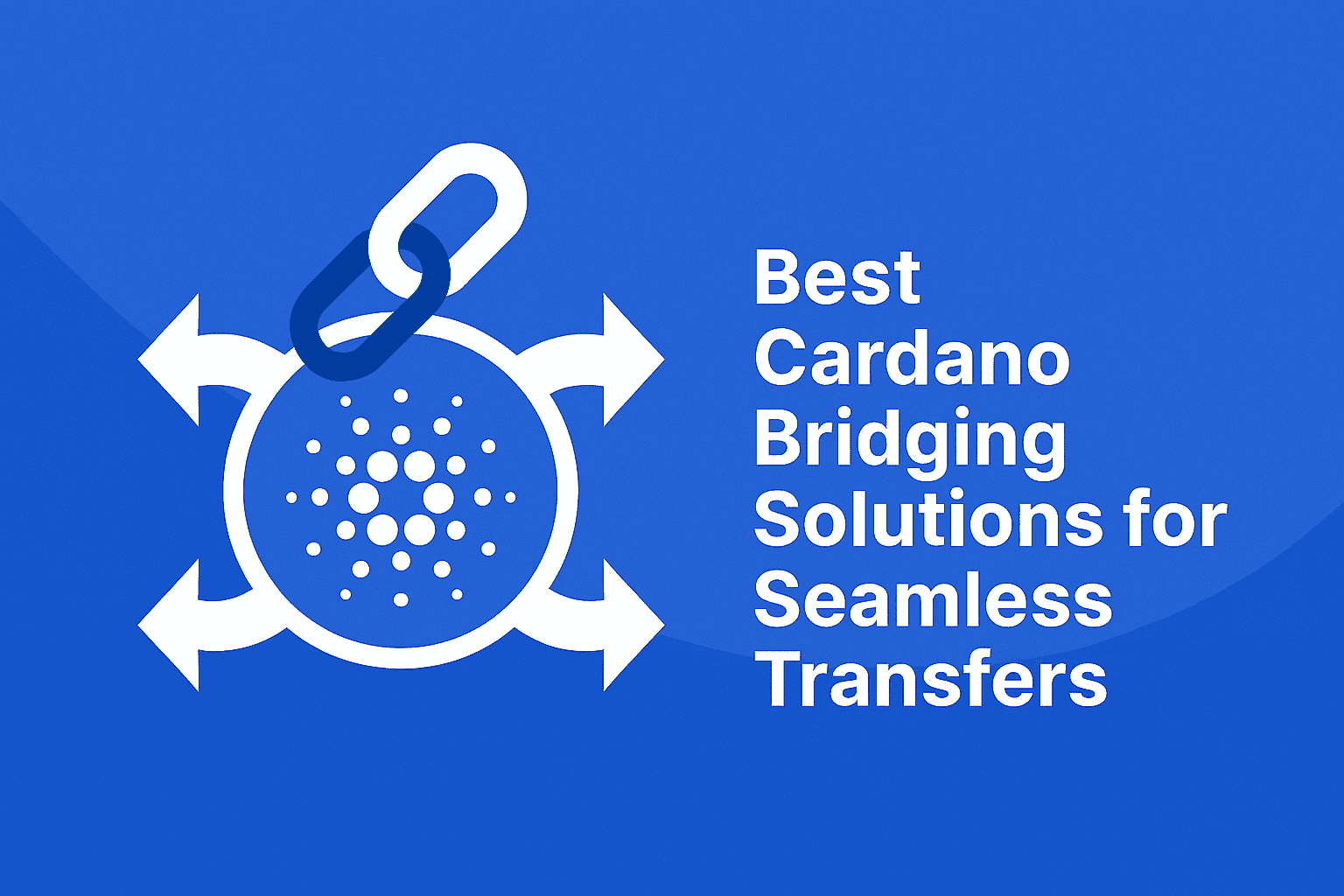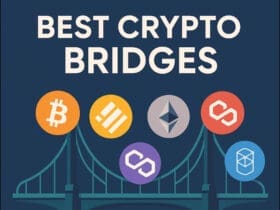The development of the Cardano ecosystem illustrates the significance of effortless cross-chain connections. The top Cardano bridge solutions for seamless transfers allow users to transfer assets, tokens, and NFTs safely and securely to and from Cardano and other blockchains.
These bridges provide access to dApps, DeFi applications, and liquidity and exit/entry swap pools on different ecosystems by providing the triple combination of speed, security, and interoperability.
The efficiency, reliability, and blockchain integration for users and developers improve with proper bridge selection.
What is Cardano Bridging Solutions?
Cardano Bridging Solutions integrate assets, tokens, and information among the Cardano and other blockchains. These serve as secure ‘bridges’ to Ethereum, Bitcoin, EVM-compatible chains, and other Layer 1 or Layer 2 networks.
Cardano bridging solutions employ non-custodial methods, smart contracts and cryptographic functions to guarantee the safe and efficient transfer of assets over multiple chains.
Solutions provide interoperability and access to decentralized applications (dApps) and provide liquidity to users and developers to access multiple blockchian ecosystems while enjoying Cardano’s security and scalability.
How To Choose the Best Cardano Bridging Solutions for Seamless Transfers?
When identifying top Cardano bridging solutions for seamless transfers, several core issues must be evaluated to determine safety, efficiency, and trust.
Security & Trustworthiness. The bridge should be noncustodial or implement secure threshold signatures and cryptographic proofs. Sound security models avoid hacks, fraud, and loss of assets or valuables in transfers.
Supported Blockchains & Tokens. Bridges that operate on multiple chains and support diverse assets, especially ADA, BTC, ETH, stable coins, and NFTs, are preferable. More comprehensive bridging solutions equals more interoperability.
Speed & Cost of Transactions. The latency of bridge transactions and associated costs should meet threshold figures to enhance the user experience. Enhanced bridging solutions use Layer 2 services or advanced protocols to lessen latency and bridging costs.
Reliability & Sound Track Record. Trust increases the bridge’s transaction volume, stable feature development, and adoption by the ecosystem. Frequent audits, plus distribution and transparency, enhance trust.
Ease of Use & Integration. Simplified bridging for users and dApp developers streamlines the process when intuitive users’ interfaces, as well as developer APIs and SDKs, are provided.
Liquidity & Scalability. The bridge should provide enough liquidity to support on and off ramps and avoid delays on large transfers. Bridges must scale as networks expand.
Ecosystem Compatibility: To increase its potential usefulness, the bridge needs to work seamlessly with DeFi interfaces, NFT marketplaces, and other applications built on Cardano.
Key Point
| Bridge Name | Key Feature | Unique Advantage |
|---|---|---|
| Wanchain | Cross-chain interoperability | Supports multiple blockchains seamlessly |
| ChainPort | Token transfers | Easy and secure asset migration |
| Milkomeda C1 | Cardano compatibility | Optimized for Cardano ecosystem |
| Rosen Bridge | Multi-chain liquidity | Fast and low-cost transfers |
| Symbiosis | Swaps across chains | Unified interface for token swaps |
| Sisu Network | Cross-chain smart contracts | Programmable bridges for DeFi applications |
| Allbridge | Asset bridging | Wide support for popular tokens and chains |
| Celer Bridge (cBridge) | High-speed transfers | Real-time cross-chain transfers |
| Connext | Instant liquidity | Low fees with high security |
| Meson | Decentralized bridge | Trustless and automated cross-chain transfers |
1. Wanchain
Wanchain is a cross-chain enabled multi-blockchain platform with a decentralized architecture, and it bridges Cardano to Ethereum, Bitcoin and several Layer 1 and Layer 2 Chains. It facilitates trustless transfers of cryptocurrency and NFTs using a non-custodial architecture that protects the assets.
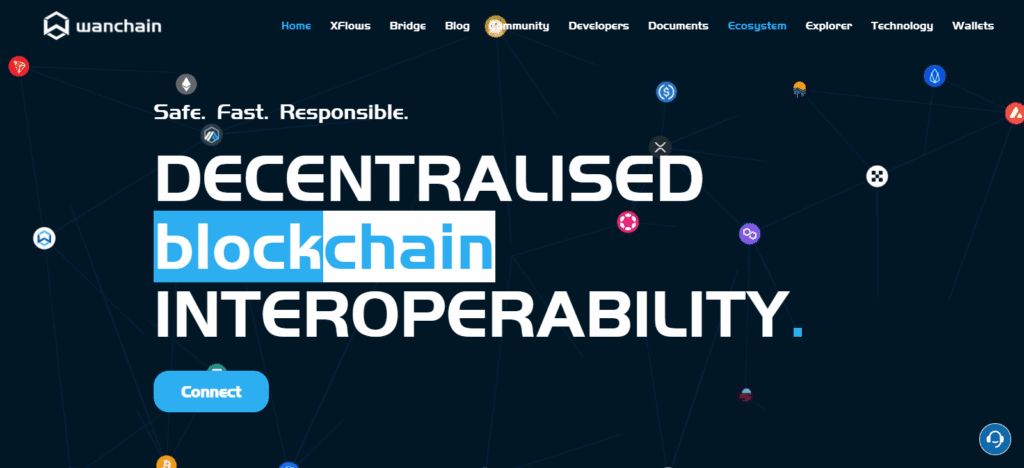
The Wanchain bridge to Cardano services the most important interoperability tokens; ADA, BTC, ETH, USDC, USDT. Wanchain is one of the most secure solutions.
It combines threshold signatures with cross-chain verification and multi-chain support. Wanchain is nominally one of the best Cardano bridging solutions for seamless transfers. It greatly enhances cross-chain liquidity and the multi-chain ecosystem.
Wanchain Key Features
- Cross-chain asset transfers for ADA, BTC, ETH, USDC, USDT.
- Non-custodial structure allowing secure transfers.
- Links Cardano to several Layer 1 and Layer 2 networks.
- Implements threshold signature and cross-chain execution.
Pros
- Transfers and asset protection.
- Many supported cryptocurrencies.
- Reliable and trusted.
- Cardano to be interconnected seamlessly.
Cons
- Difficult for beginners.
- Lower support for smaller altcoins.
- Cross-chain fees are dynamic.
- Transmits slower during congestion.
2. ChainPort
As a multi-directional bridge, ChainPort facilitates the transfer of assets between Cardano along with EVM-compatible ecosystems. It also allows users the transfer wrapped tokens and perform native bridging.
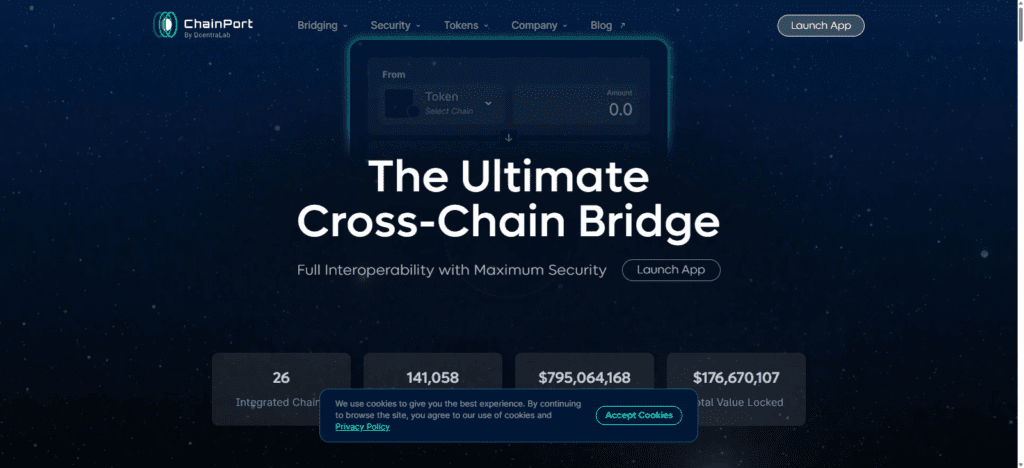
Therefore, users can perform transfers of ADA and other assets easily. For instance, wrapped ADA (wADA) which is fully backed by ADA and is interchangeable on Ethereum, BSC, and Polygon, significantly adds to Cardano’s utility across multiple ecosystems.
ChainPort is also a smart bridge contract, which prioritises ease of use. With the addition of ChainPort, users and developers can utilise dApp across multiple chains without altering the original value of the token. There is a reason why ChainPort is considered one of the best bridges for Cardano to ease transfer.
ChainPort Key Features.
- Bridging wrapped and native tokens.
- Transfers ADA to EVM-compatible chains.
- Provides 1:1 backed wrapped ADA (wADA).
- Smart contract cross-chain mechanism.
Pros
- Simple for developers.
- Many chains supported with ADA.
- Secure and non-custodial.
- Expands Cardano’s DeFi.
Cons
- Non-EVM chains are limited as well.
- Busy times causes slower processing.
- Wrapped tokens become more complex.
- Fees are not stable.
3. Milkomeda C1
Milkomeda C1 is an EVM-compatible sidechain for Cardano, allowing developers to implement Ethereum-based smart contracts and dApps while using Cardano’s security. For use with Ethereum-compatible apps, Milkomeda C1 uses mADA, a wrapped version of ADA.

Milkomeda C1 improves scalability and interoperability by bridging Cardano with EVM ecosystems, enabling users to access previously unavailable DeFi and NFT projects.
Milkomeda C1’s secure sidechain infrastructure provides reliable token transfer, contract execution, and overall cross-chain functionality. Milkomeda is often viewed as the best Cardano bridging solution for seamless transfers and is making Cardano more accessible to Ethereum developers.
Milkomeda C1 Key Features:
- Sidechain that is EVM-compatible for Cardano.
- Transaction using mADA (wrapped ADA).
- Ethereum smart contracts and dApps are supported.
- Cardano’s scalability and interoperability improved.
Pros:
- Ethereum ecosystem available.
- Rapid and secure transfers of tokens.
- Environment friendly towards developers.
- Cross-chain dApp adoption promoted.
Cons:
- Knowledge of EVM is mandatory.
- No native Cardano tokens.
- Risk is brought by dependence on sidechains.
- Can be congested if demand is high.
4. Rosen Bridge
Developed by Ergo, Rosen Bridge is an open-source cross-chain asset transfer solution between Cardano and other blockchains. Rosen Bridge employs threshold signature schemes to validate transactions to guarantee decentralised and secure asset transfer.
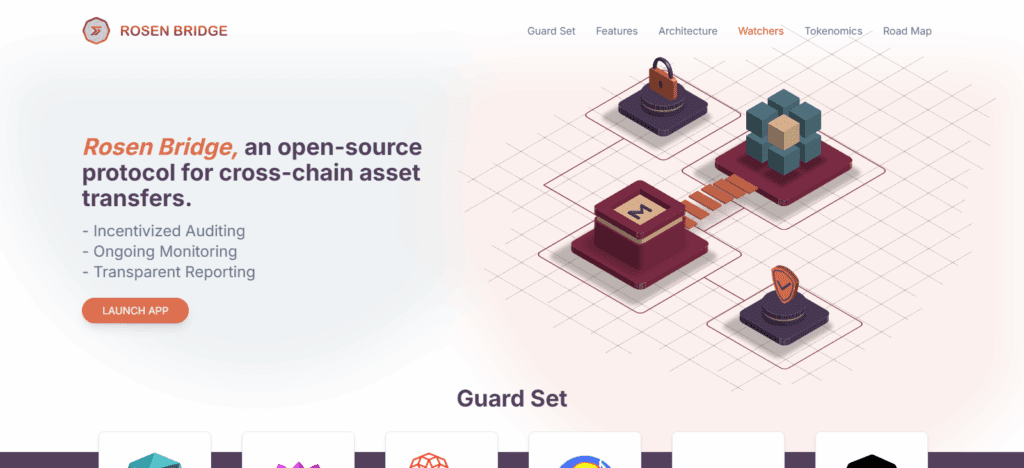
The bridge leverages the ease of cross-ecosystem access by supporting multiple coins and tokens. Rosen Bridge seeks to simplify decentralized interoperability.
Its beta integration with Cardano demonstrates its promise as a foundational bridge for cross-chain connectivity. Rosen Bridge is also considered one of the most efficient and secure Cardano bridging solutions for seamless transfers.
Rosen Bridge Key Features:
- Cross-chain protocol that is open-source.
- Transfer secured by threshold signatures.
- Transfer ADA and other tokens.
- Decentralized interoperability.
Pros:
- Trustless and secure bridge.
- Transparency owing to open-source.
- Less dependence on centralized intermediaries.
- Cardano and beta integration.
Cons:
- In beta stage which can be unstable.
- Limited tokens available at first.
- Still low adoption.
- High technical complexity for most users.
5. Symbiosis
Symbiosis is a cross-chain Automated Market Maker (AMM) and liquidity protocol for seamless token swapping for Cardano and other blockchains. It pulls liquidity from EVM and non-EVM liquidity chains. Symbiosis enables quick custodian-free asset exchange.
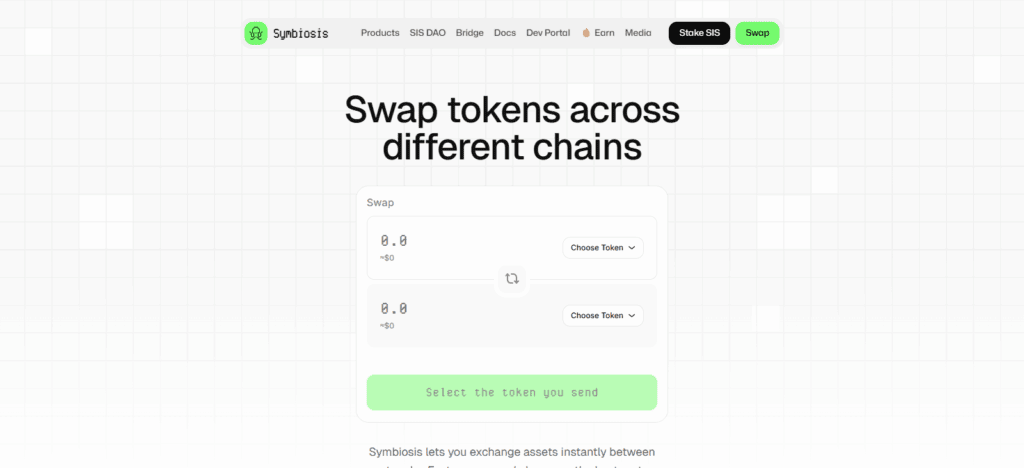
Symbiosis closes liquidity gaps and enables frictionless trading for all ecosystems. It is non-custodial and lossless and integrates perfectly with other DeFi systems. Symbiosis is one of the best Cardano bridging solutions for seamless transfers. It is fast, secure, and cost efficient for cross-chain users and developers.
Symbiosis Key Features
- The cross-chain AMM and liquidity protocol.
- Gathers liquidity from many different chains.
- Works with EVM and non EVM chains.
- Offers non-custodial cross-chain swaps.
Pros:
- Efficient token swaps.
- Closes liquidity gaps.
- User-friendly and non-custodial.
- Integration with various DeFi and NFT platforms.
Cons:
- Effectiveness may demand considerable liquidity.
- Cross-chain fees can be unpredictable.
- Complexity for new users.
- Congested networks can slow down swaps.
6. Sisu Network
Sisu Network is a secure cross-chain bridge focused on Cardano, targeting transaction cost reduction and scalability improvement through Layer 2 solutions. It is a friendly interface for users to transfer ADA and other tokens between blockchains.

Trustless transfers of assets are assured since Sisu Network is built on Cardano’s core security protocol. Sisu Network fosters cross-chain functionality for easy access to EVM-compatible dApps for developers.
Sisu Network prioritises ecosystem expansion, user adoption, and cross-chain intentionality. Sisu Network is among the best Cardano bridging solutions for seamless transfers as it interlinks users to a variety of decentralised services.
Sisu Network Key Features
- Offers Layer 2 scaling for Cardano bridges.
- Reducing transaction costs.
- Cross-chain interface is user friendly.
- Access to EVM-compatible dApps.
Pros:
- Below main chain transfers.
- Bridging is secure and trustless.
- Developer adoption is encouraged.
- Multi-chain asset transfers are seamless.
Cons:
- Public adoption remains limited.
- Layer 2 dependency can be risky.
- Initial token support will be limited.
- Integration may need technical know-how.
7. Allbridge
Allbridge facilitates rapid and secure cross-chain transfer of assets between Cardano and many other blockchains. Allbridge works with Cardano and other notable cryptocurrencies enabling users to swap and transfer assets seamlessly with other ecosystems.
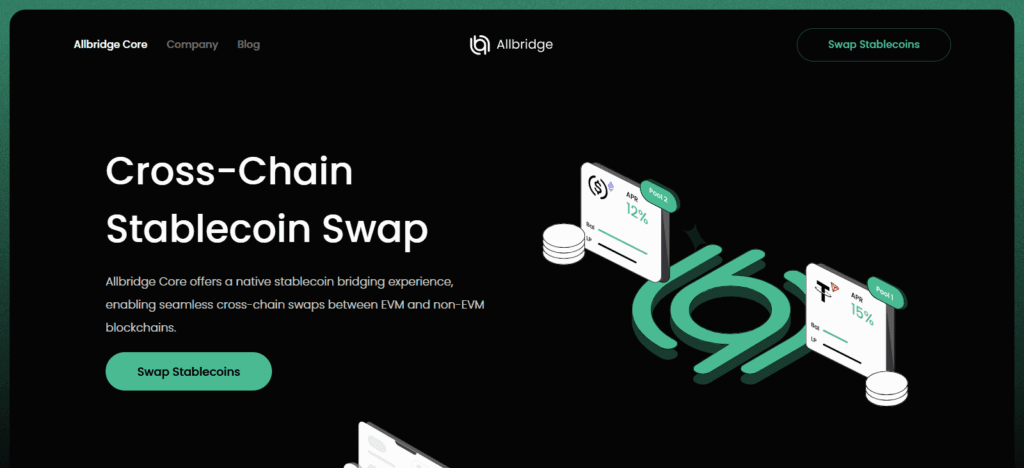
Allbridge aims to provide transfers with the least possible friction and uses a non-custodial transfer approach to transfer assets securely and transparently. Their approach to non-custodial transfers expands Cardano’s liquidity and participation within Cardano’s DeFi, NFTs, and other blockchain use cases.
Allbridge guarantees seamless blockchain interoperability with optimal performance and affordability, placing them among the best Cardano bridging solutions for seamless transfers.
Allbridge Key Features:
- ADA and main tokens support.
- Transfers are trustless and non-custodial.
- Cross-chain swapping assets between ecosystems.
- Focused on liquidity bridging.
Pros:
- Cross-chain transfers are efficient.
- User friction is lower.
- Participation to Cardano ecosystems improves.
- DeFi and NFT integrations can be utilized.
Cons:
- Limited support for small tokens.
- Transfers are a bit slower when volume is high.
- Transfer fees can differ based on chains.
- Some blockchains are not supported.
8. Celer Bridge (cBridge)
cBridge is a high performance, decentralized cross-chain bridge for 40+ blockchains and layered block rollups including Cardano. With Celer’s Inter-chain Messaging Absraction technology, cBridge guarantees the rapid, cheap and secure transfer of assets in addition to processing over $14 billion worth of transactions.
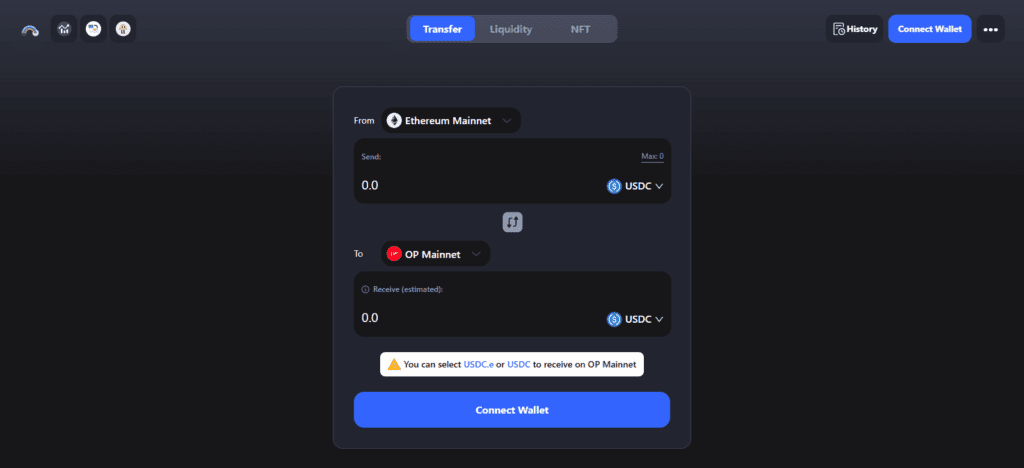
cBridge’s reliability and scalability are composed of rapid transfer of assets, inexpensive transfer fees, and seamless transfer of NFTs, ADA, and other cryptocurrencies with instant confirmations.
This is possible with the cBridge cross-chain network, which is ideal for DeFi and NFT transactions. Celer Bridge is one of the best Cardano bridging solutions for seamless transfers as it offers enhanced cross-chain instantiation for asset mobility.
Celer Bridge (cBridge) Key Features:
- Compatible with over 40 blockchains and Layer 2 rollups.
- Quick and affordable asset transfer.
- Celer Inter-Chain Messaging and Bridge technology.
- Non-custodial bridge.
Pros:
- Scalable and fast.
- Over $14B cross-border transfer.
- Cheap cross-border transfer.
- Trustworthy and safe.
Cons:
- Beginners may find it difficult.
- New blockchains may not offer reliable service.
- Unless cross-border transfer is free, it will greatly depend congestion.
- No reliable Layer 2 explanation will be hard to cross.
9. Connext
Connext is an interoperability protocol for cross-chain interoperable, secure, quick, and cheap Cardano and cross-chain Cardano asset transfers. It leverages state channels to decentralise while minimising transactional lag and costs.
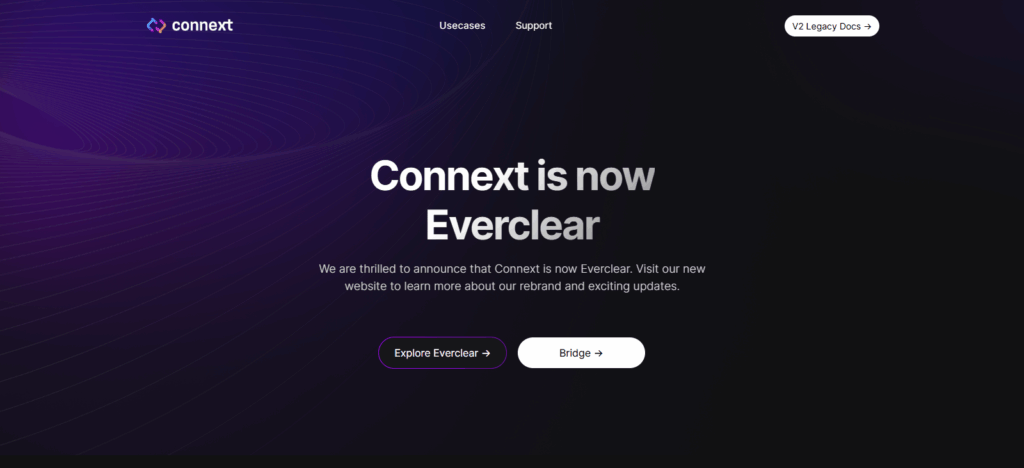
Connext handles a variety of cross-chain tokens making it easier to join cross-chain DeFi and NFT ecosystems. Developers can add cross-chain functionality without a bad user experience due to Connext’s ultra-scalable architecture.
The absence of a transfer delay, reliability, and instant transfer has made Connext one of the best Cardano bridging solutions for seamless transfers.
This solidifies Connext’s mission of interoperability in the cross-brick Cardano’s blockchain landscape. Connext offers Cardano interoperability with Connext and cross-chain DeFi integration.
Connext Key Features:
- State channel fast transfers.
- Cheap cross-border transfer.
- Compatible with Cardano.
- Scalable and no friction to use.
Pros:
- Cheap and fast transfer.
- No third party.
- Great for DeFi and NFT applications.
- High network congestion will be useless.
Cons:
- Cardano is not used widely yet.
- State channel will be hard to find.
- Complicated for small applications.
- Some tokens will be restricted.
10. Meson
Meson is a decentralised bridging protocol designed for secure and efficient cross-chain transfers of Cardano assets. It utilises highly sophisticated cryptographic methods for trustless and secure bridging.
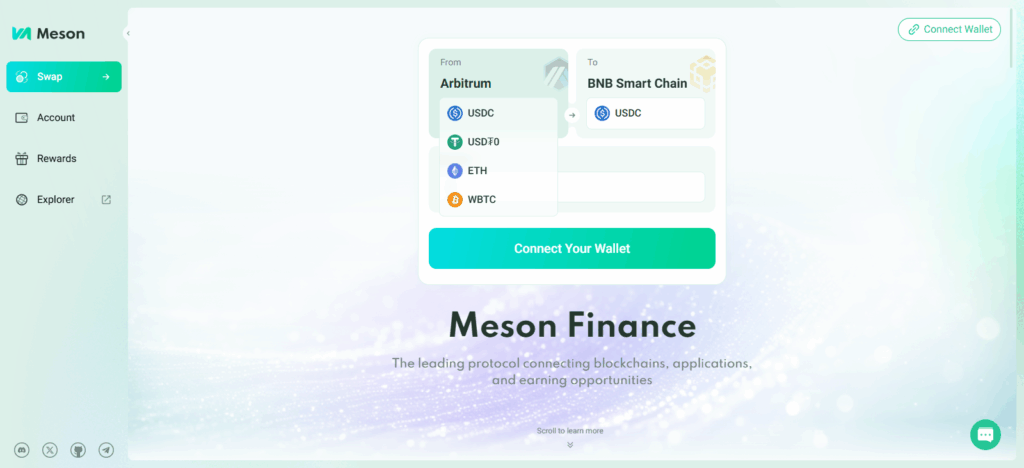
Meson allows users to cross blockchain networks with ADA and keep tokens cross-Cardano DeFi assets and cross-Cardano NFT assets, helping to expand the Cardano ecosystem. It offers secure, non-custodial bridging of assets, eliminating meson as a custodian and unbridging intermediary.
Meson is one of the best Cardano bridging solutions for seamless transfers, boasting highly sophisticated cryptographic methods for decentralised cross-bridging of assets, as well as accessible cross-chain DeFi and NFT assets.
Meson Key Features
- No third party.
- Advanced cryptography for transfers.
- Cardano and other cross-chain.
- DeFi and NFT.
Pros:
- No third party.
- Expanding Cardano and adjacent ecosystems.
- Hybrid useful and low risk.
- Supports NFTs, DeFi, and other diverse use cases.
Disadvantages:
- Less recognition and use.
- May be difficult to include technically.
- Fees depend on the chains.
- Support for smaller tokens is limited at the beginning.
Conclusion
In summary, the most effective Cardano bridging solutions for Cardano seamless transfers underpin the blockchain’s interoperability, liquidity, and ecosystem growth.
These solutions integrate Cardano with Ethereum, Bitcoin, and other blockchains, facilitating secure, rapid, and affordable asset transfers and access to DeFi, NFTs, and cross-chain functionalities.
Choosing dependable bridging solutions allows users and developers to optimise for effective, safe, and expanded opportunities with inter-chain technologies.
FAQ
Cardano bridging solutions are protocols or platforms that enable the transfer of assets, tokens, and data between the Cardano blockchain and other blockchains like Ethereum, Bitcoin, and EVM-compatible chains. They ensure secure, fast, and seamless cross-chain interoperability.
Bridges expand Cardano’s ecosystem by enabling access to DeFi, NFTs, and liquidity pools on other chains. They enhance interoperability, increase token utility, and allow users to participate in multi-chain applications without losing security.
Some of the best Cardano bridges include Wanchain, ChainPort, Milkomeda C1, Rosen Bridge, Symbiosis, Sisu Network, Allbridge, Celer Bridge (cBridge), Connext, and Meson. Each offers unique features, supported tokens, and cross-chain capabilities.
Most top bridges use non-custodial models, cryptographic verification, or threshold signature schemes to ensure asset safety. However, users should verify if the bridge has undergone audits and check its adoption and track record.
Yes, many Cardano bridging solutions, like Wanchain and Milkomeda, support NFT transfers between Cardano and other blockchain networks, enabling cross-chain NFT ownership and marketplace access.





